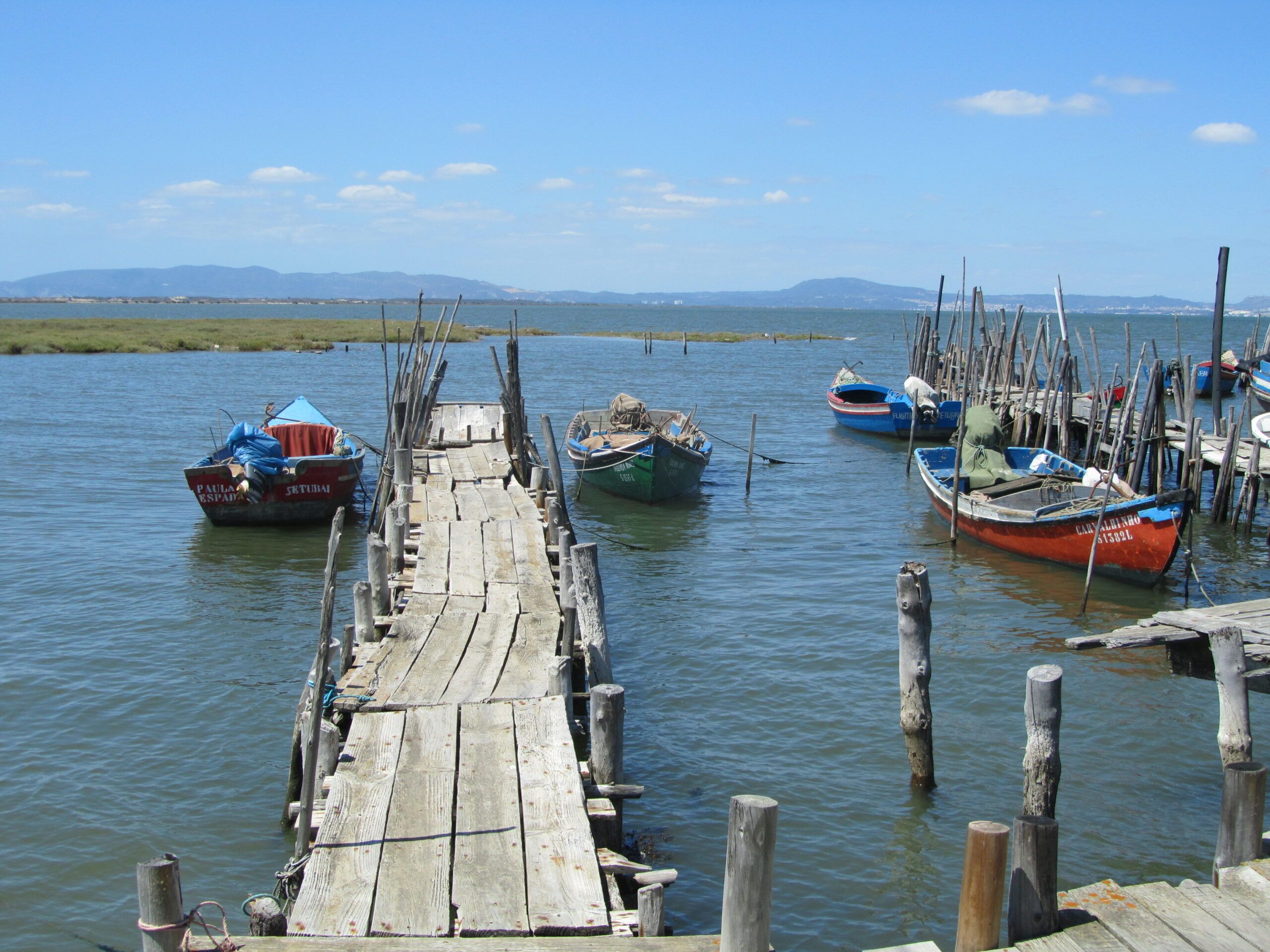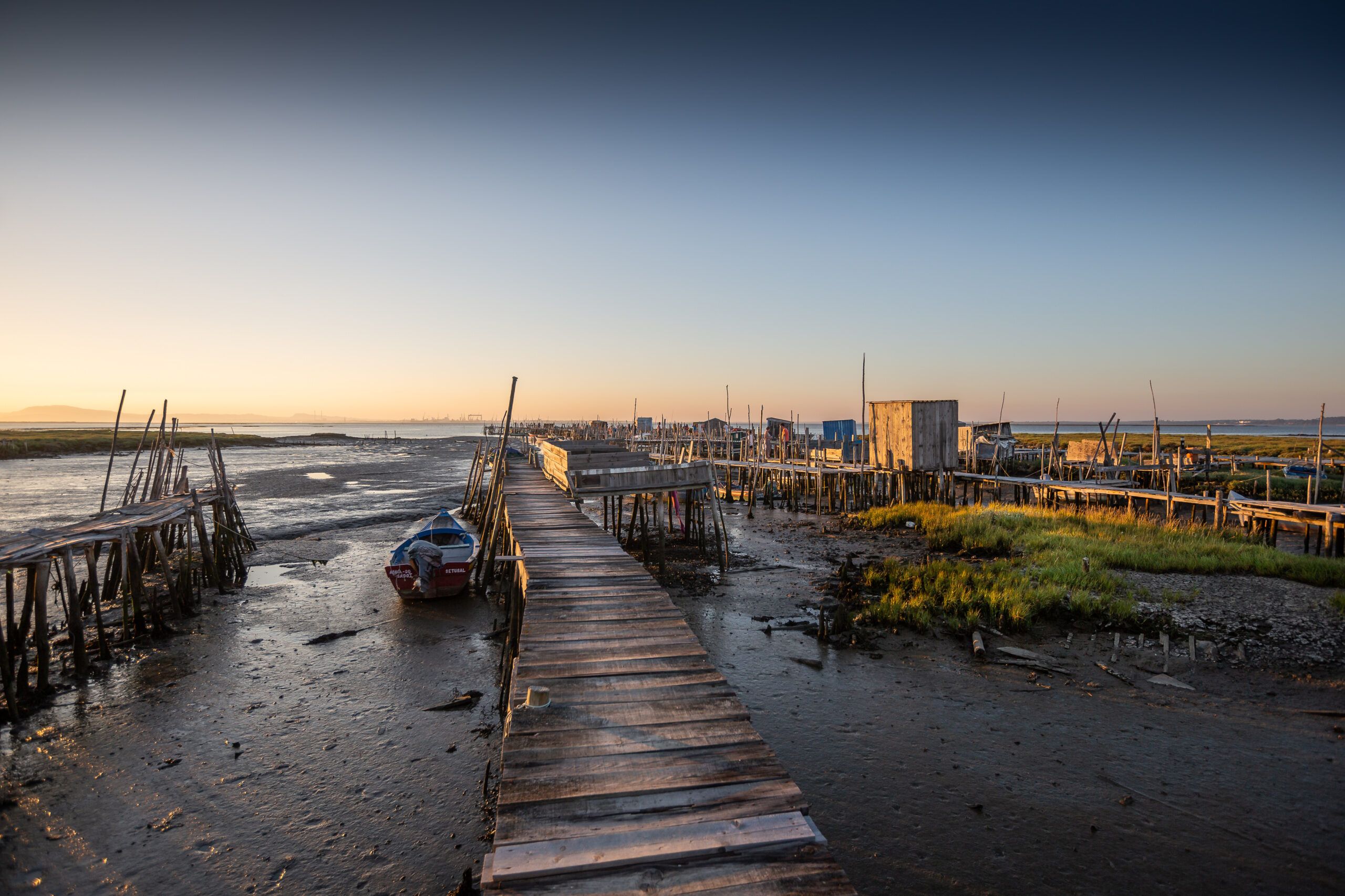Palafitic Pier of Porto da Carrasqueira
Categories/tags: Portable building techniques.
Historical context: The construction of the Palafitic Pier of Porto da Carrasqueira is deeply rooted in the historical context of Alcácer do Sal’s cultural heritage. Historically, the region has been a fertile space for resource exploitation since the Early Chalcolithic period. While archaeological evidence is scarce due to the perishable nature of the dwellings, references to these structures date back to the Christian medieval documentation. The pier represents a cultural landmark, embodying the adaptive strategies of riverside communities to their environment over generations.
Form – main architectural features: The Palafitic Pier of Porto da Carrasqueira is characterized by a network of narrow pathways intricately woven above the water’s surface. Supported by a series of wooden palafits firmly inserted into the estuary substrate, the pier resembles a fishing village suspended above the water. This unique architectural arrangement reflects the traditional building techniques passed down through generations of the local community.
Function: Constructed across multiple generations, the primary function of the Palafitic Pier is to facilitate fishing activities. By elevating the walkways above the water, the pier ensures accessibility for fishing boats even during high tides. Additionally, it promotes the safety and feasibility of fishing operations, contributing to the livelihoods of local fishermen.
Lessons for sustainability: The Palafitic Pier of Porto da Carrasqueira exemplifies sustainable architecture through its conscientious utilization of local resources and harmonious integration with the natural environment. By employing traditional building techniques and adapting to the dynamic interplay between aquatic and terrestrial environments, the pier showcases a delicate balance between societal advancement and the preservation of natural and cultural values.
Cultural heritage and tourism: As a symbol of local heritage, the Palafitic Pier attracts tourists and photographers intrigued by its unique construction and preserved landscape. Its historical significance and aesthetic appeal contribute to the cultural identity of Alcácer do Sal, highlighting the importance of preserving traditional architectural heritage for future generations to appreciate and learn from.
The graceful presence of the Palafitic Pier of Porto da Carrasqueira amidst the tranquil waters of the Sado River estuary not only preserves the rich cultural heritage of Alcácer do Sal but also serves as a poignant reminder of the enduring bond between humanity and its natural surroundings.
Location: Cais Palafítico do Porto da Carrasqueira, Comporta – Portugal
Palafitic Pier of Porto da Carrasqueira, Alcácer do Sal – Portugal
Sources
Carvalho, A. R. & Balona, R. (2014). A Freguesia da Comporta/Alcácer do Sal: Resenha Histórica.
Nunes, A. R. M. (2016). Arquitetura da água – Cais palafítico da Carrasqueira. (Master’s Dissertation). Universidade de Évora.
Pareti, S., Flores, D., Rudolph, L., & Valdebenito, V. (2022). Wooden Vernacular Architecture asa Sustainable Development and Security Mechanism. The case of the Palafitos of Chiloé, Chile. Proceedings of the 7h World Congress on Civil, Structural, and Environmental Engineering (CSEE’22), 223. https://doi.org/10.11159/icgre22.223



